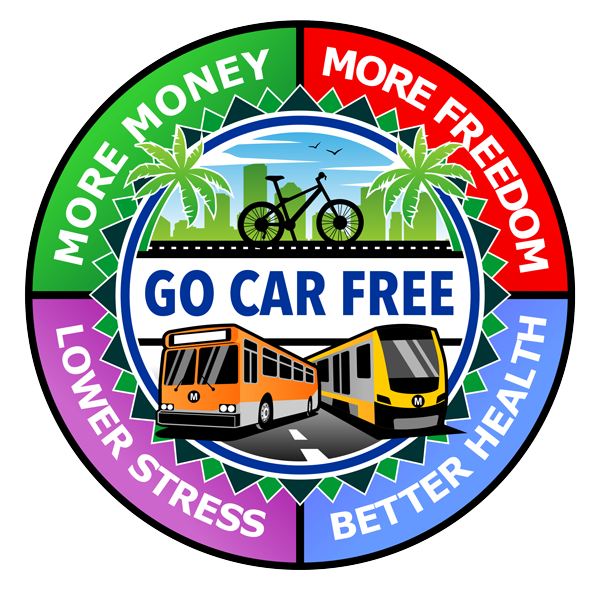
Lesson 14
Get Moving! Walking, Jogging, Rolling, and Skating
“When I moved a mile away from my job I lost thirty pounds in nine months.”
– Tara McComb

According to the U.S. Census, more than four million Americans walk to work. Walking requires no special equipment or training. It’s convenient and always available. And it’s predictable; there aren’t any pedestrian traffic jams, so you always know how long it will take to get to the office.
The only fuel you need to commute on foot is a nutritious breakfast. When you walk to work you’ll never worry about rising gas prices. Walking is free.
Walking is also the most sustainable form of transportation. It does not cause pollution and has the least impact on the environment. Walking reduces traffic congestion and the need for parking spots. It’s also good for you.
Car Free Success Story:
I’m lucky enough to walk to work, which gives me guaranteed exercise, headspace, and stress relief both before and after work. Driving can be a job in itself, especially in larger cities or on long commutes. It’s a chore that is absent from my car free life, and I appreciate the mental and physical benefits endlessly. It will be a sad day indeed if I have to move somewhere where I have to drive to work and to the store. Living without a car is a tremendous luxury. Most people who are car dependent can’t understand that, but it is.
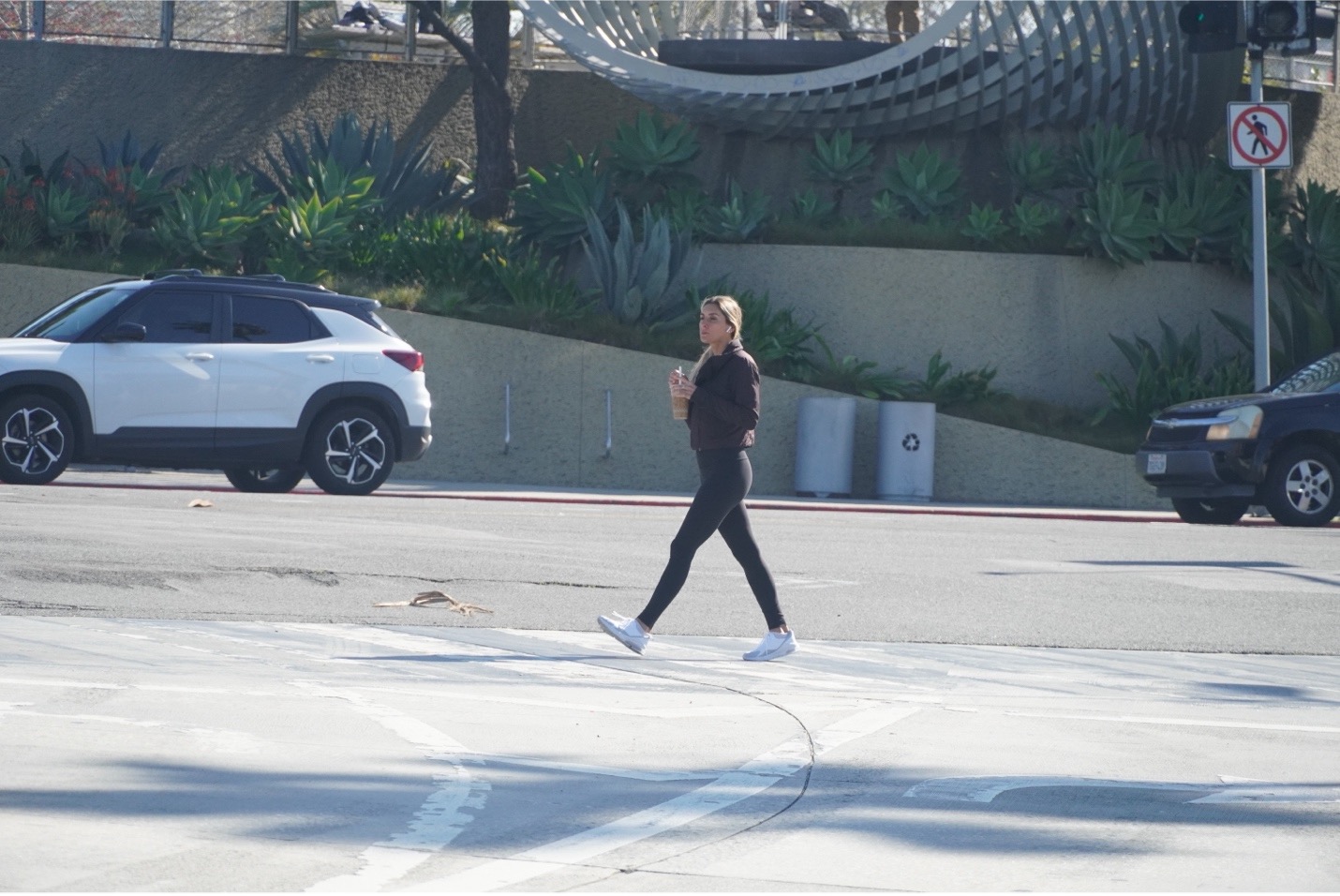
The Health Benefits of Walking
The U.S. Surgeon General recommends thirty minutes of exercise a day. Walking to work is a guaranteed way to fit regular exercise into your routine. Just like riding a bicycle to work, you get your exercise during your commute.
Daily walking can help you build cardiovascular fitness, control high blood pressure, and decrease the risk of heart disease, stroke, and diabetes. Thirty minutes of walking every day can help lower your cholesterol and reduce your risk of cancer. Walking also helps strengthen bones and prevent osteoporosis.
Would you like to lose weight and look great? Walking for thirty minutes a day reduces the risk of obesity. A hundred-and-fifty-pound person will burn roughly one hundred calories per mile of walking.
So if you walk two miles each way to the office five days a week, that’s two thousand calories you don’t have to sweat off on the treadmill. A study by the University of Massachusetts Medical School found that a brisk forty-five-minute walk four times per week for a year could lead to an eighteen-pound weight loss without dieting!
Other Benefits of Walking
Many studies link moderate daily exercise, such as walking, to an improved mental outlook and reduced risk of depression and anxiety. People who walk to work say they arrive at the office feeling energized and alert, without an artificial boost from caffeine. Walking every day may give you more energy and help you sleep better.
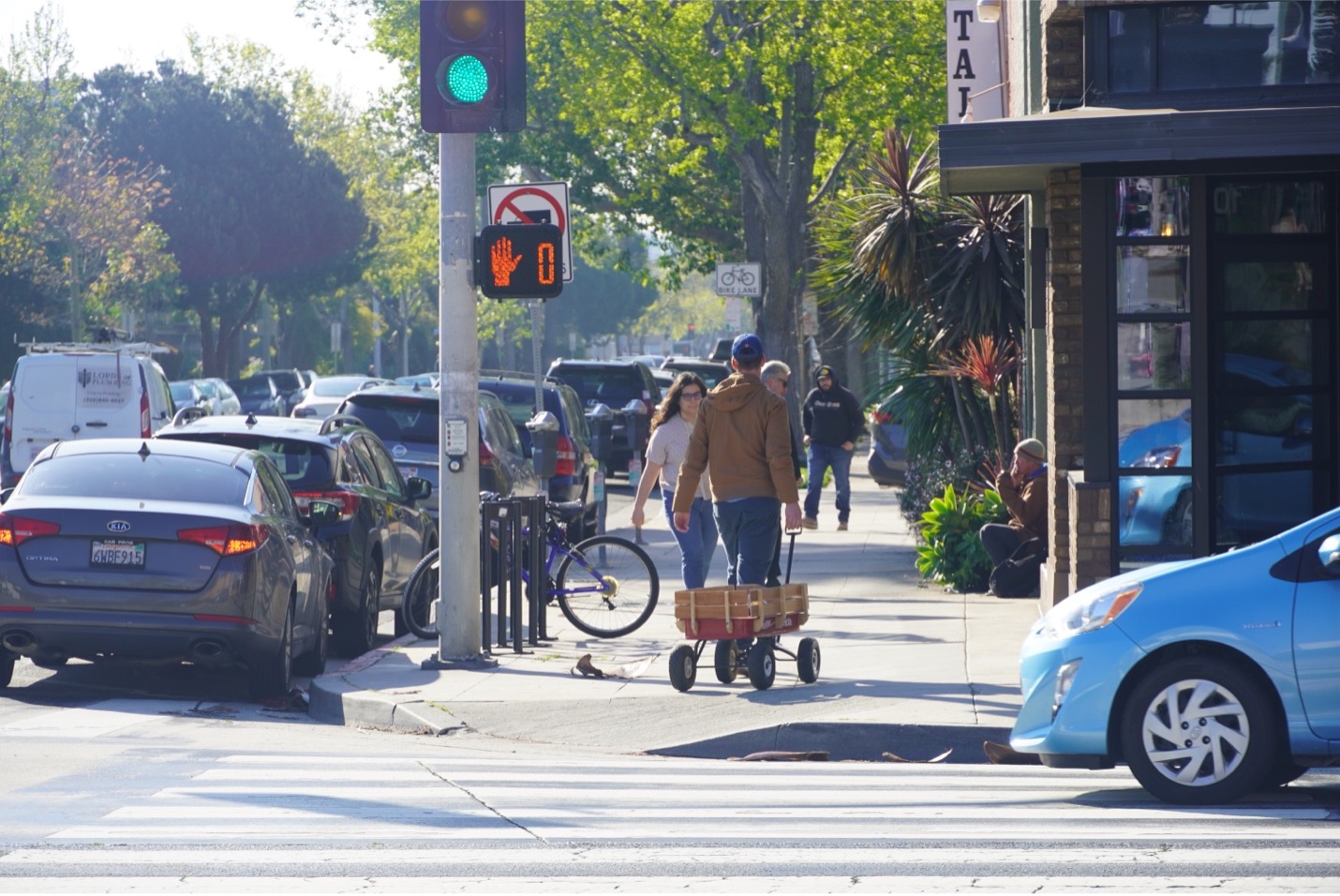
Walking to work has social benefits, too. High pedestrian traffic discourages crime and makes citizens feel safer. When you stroll through your community twice a day you’ll get to know your neighbors, and you’ll meet people on the sidewalk. In contrast, when you drive through your neighborhood in a car you meet no one.
Car Free Success Story:
I save a lot of time living so close to work. Or rather, getting to and from work takes relatively little time, so I have more time before and after work to exercise, cook, relax, read, or hang out with a friend. With a car you think you can and should be able to get a lot done – errands, kids to daycare, and sports – so you do more and feel busier than you really have to be.
On foot, you can only go at a human pace. You notice more things in your environment: the seasons, the feel and smell of the air, people. I think walking humanizes us. The popular media are full of stories about how busy we are, how stressed and tired, as well as how unhealthy and fat we are. Having a life that is within walking distance is a simple way to counteract that paradigm. I think it is definitely worthwhile to live within walking distance of one’s job.
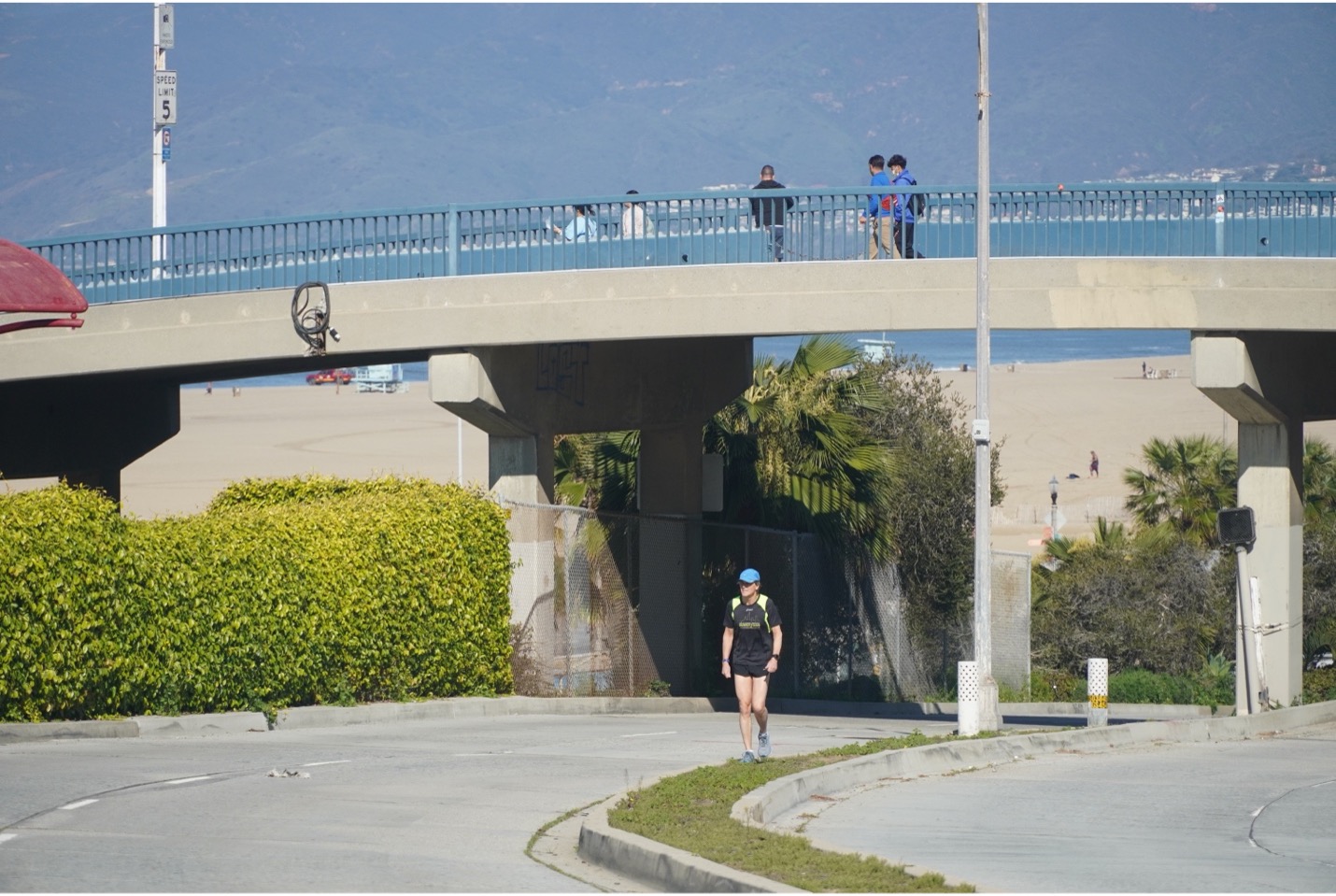
How Far Can You Go?
According to a survey of pedestrians by the U.S. Department of Transportation, the average length of a walking trip is 1.2 miles. For recreational purposes that number climbs to 1.9 miles.
Fifteen percent of all walking trips are over two miles long. So generally, if you live within two miles of work, walking is a realistic mode of commuting.
Living within two miles of your workplace also opens up other commuting options. When you’re that close, you can in-line skate, skateboard, jog, or ride a push scooter to the office. On a snowy day you could even cross-country ski to work!
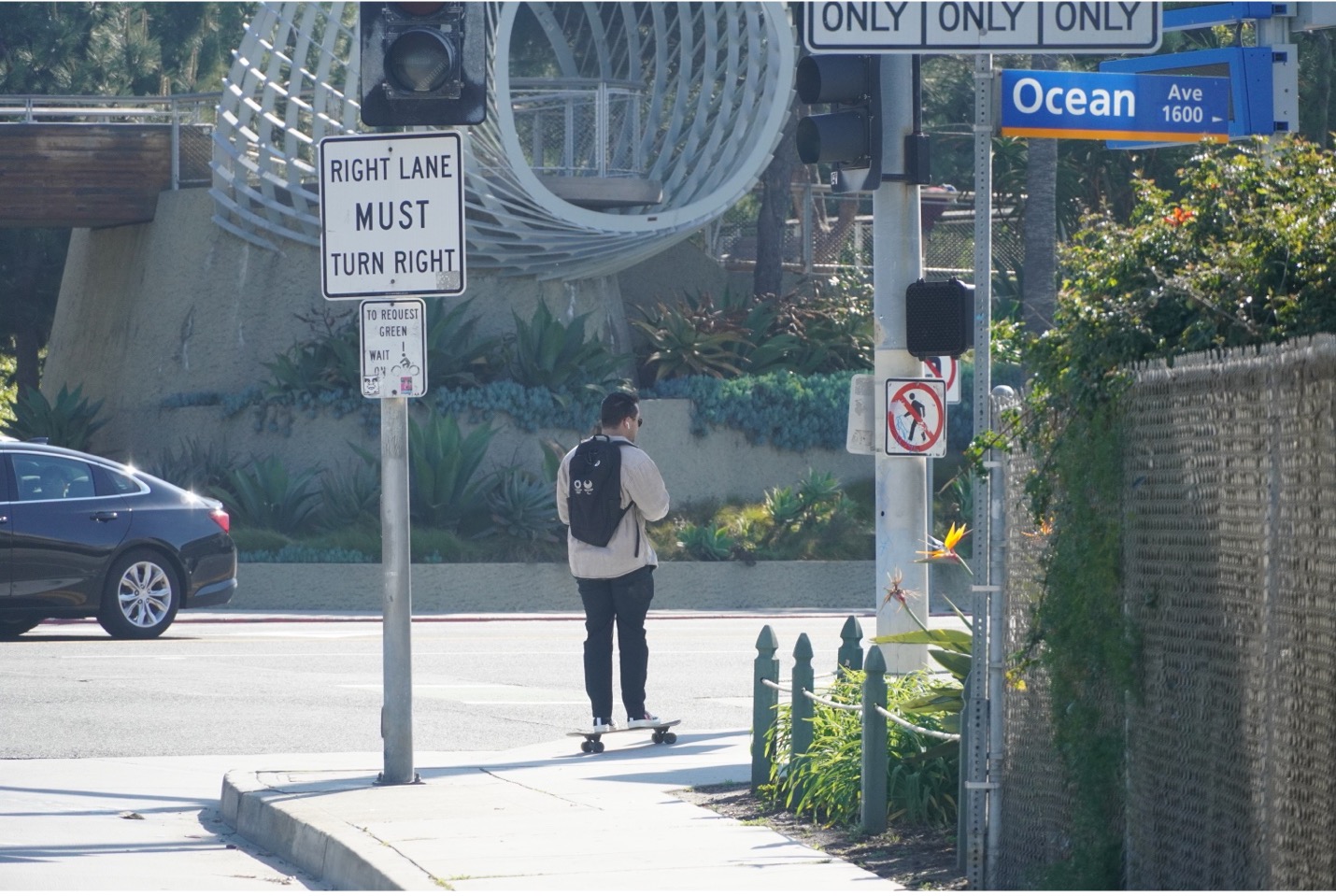
Jogging and Skating to Work
If you jog, skateboard, or in-line skate to work every day, or even a few days a week, you’ll get in amazing shape, you’ll be out in the fresh air, and you’ll get to work faster than walking.
There are three significant challenges associated with jogging or skating to work. But all three can be overcome with a little forethought and planning.
The first challenge is that you can’t wear your work clothes while you’re running or skating, and you can’t carry your work clothes with you. You’ll have to develop another system. We’ll address wardrobe and grooming in detail in the next lesson.
But here are a few options. Ride your bike to work on Mondays and bring a week’s worth of work clothes with you on your bike. Or, find a dry cleaning service that will pick up and drop off at your workplace, then store your work clothes in your cubicle, office, or a store room.
The second challenge is arriving at the office sweaty. You’ll need to find a place to shower and change. Does your employer have a fitness center or a locker room? Or is there a health club within walking distance of your workplace where you can shower and change? If you don’t sweat profusely you may be able to just use some wipes and skip the shower.
The third challenge is that you can’t really carry anything while you’re jogging or skating. No briefcase, no lunch, no laptop computer. Depending on your job, this may not be an issue at all.
But if you need to take work home with you, you’ll have to make other arrangements. Maybe you can keep a separate work computer at home and transfer files digitally or via Dropbox.
No matter what the challenge, there is always a car free solution.
Finding the Best Route
As with bicycling, when you walk, jog, or skate to work you should try to find two or three different routes. You may prefer one route on a calm sunny day, a different route on a windy day, and yet another route if you have to commute home after dark.
Things to look for:
- Street lights
- Sidewalks with smooth pavement
- Scenic views and tree-lined streets
- Proximity to services
Things to avoid:
- Intersections without clearly marked crosswalks
- Loud traffic noise
- Poorly lighted areas
- High crime areas
- Aggressive dogs
Safety
Even though you’ve been walking your entire life, you still need to take a few precautions when commuting near traffic.
First, stay on the sidewalk whenever possible. Where there is no sidewalk, walk against oncoming traffic – the opposite is true for bicycling. Use peripheral vision to keep an eye on moving vehicles, and be alert for cars pulling out of driveways, alleys, or side streets.
Second, always cross major streets at a crosswalk; don’t jaywalk. When crossing at a busy intersection, beware of drivers making a right turn on red – they’re usually looking for cars coming from the left and may not see you. Accept the fact that many drivers do not know pedestrians have the right of way in a crosswalk.
Third, wear light-colored clothing, a reflective vest, or a strobe light when traveling in the dark or other poor visibility conditions. At night carry a flashlight. Use sunscreen in the summer.
Dress for Walking Success
For most of the year you will probably be able to walk to work in regular work clothes. But if it’s too hot, wear shorts and a T-shirt during the walk, then change at the office.
On chilly mornings, a light jacket is all you’ll need because you’ll generate body heat as soon as you start walking. Unless there are strong winds, an umbrella will handle the rain. If it’s storming, you can either wait it out or wear rain gear as described in Lesson 13.
On freezing cold winter days, dress in layers and wear a wind-blocking nylon shell and pants. Cover exposed skin with gloves, earmuffs, a hat or headband, and a fleece face mask. Dressed properly, I’ve walked to work in temperatures as low as ten degrees and never felt cold.
Car Free Success Story:
My husband and I gave up our two cars. We did it because my husband got a job within walking distance of our home. He purposely looked for a job he could walk to because he was sick of commuting an hour and a half every day. He loves walking and his dream of walking to work was fulfilled. It felt good to be car free. Eventually we moved to a new home even better situated for car free living – closer to my school, the metro, and my husband’s work. Since that time we never even think about having a car.
All Shoes Are Not Created Equal
Specialized walking shoes are a good idea. Women should not walk to work in high heels; men should not walk in leather dress shoes. Walking shoes are designed specifically to provide much-needed support and cushioning for your feet.
Running shoes are more comfortable than dress shoes, but they don’t make ideal walking shoes either. The biomechanics of running differ from walking, therefore shoes for each activity are designed differently. Walking long distances without proper footwear can cause blisters, shin splints, and joint pain.
Most walkers keep a few pairs of dress shoes under their desk at work and change out of their walking shoes once they get there. Keep a stash of clean dress socks at work, too, since your feet will sweat during your commute.
Carrying Cargo
A waist pack or small backpack is all you’ll need to carry things to and from the office. The best designs transfer most of the weight to a hip belt, so your shoulders don’t bear the load. Look for a waterproof or water-resistant material.
As with bicycling to work, on a rainy day you may want to wrap your laptop computer, clothes, or other important papers in a plastic trash bag for further protection. I carry a Canon digital SLR camera to work in my backpack every day, through rain and snow, and it’s never even gotten damp.
Getting Started
If you haven’t exercised in a while, don’t expect to jump right in and walk two miles to work and two miles back. That’s harder than it sounds. Start slow and ease into it.
Perhaps begin by walking for fun on the weekends, then gradually build up to two miles twice a day. Before long you’ll be walking to work and back without any problem.
Always consult with a doctor before beginning a new exercise routine. As with any form of exercise, drink plenty of water before, during, and after. A light stretch before each commute is also a good idea.
Car Free Success Story:
My husband and I have been car free for about sixteen years. I chose my current job over another position that paid twice as much because it would allow me to walk to work and the other position would have necessitated a car. Of course, it is also delightful to walk, and on the occasions when I am out on the highway during rush hour I realize how lucky I am. Many people in traditional, not sprawled, communities can easily manage without a car.
Walk for the Fun of It
One more benefit of walking, jogging, or skating to work is that you start and end your day with a fun adventure. You get to feel the change of seasons, enjoy the smell of flowers and cut grass, savor the sunrise, and admire architecture – and you can people-watch. Walking naturally helps you slow down and notice life’s little pleasures.
On the way home, walking is a great way to physically relax and mentally destress from a day at the office. Driving a car through evening rush hour, however, is an effective way to increase your stress level.